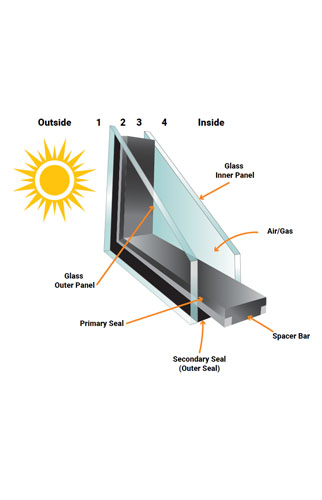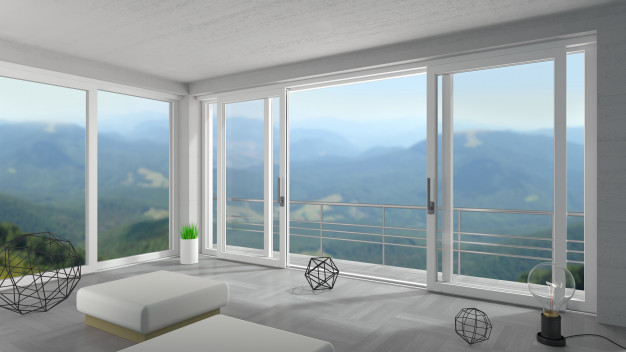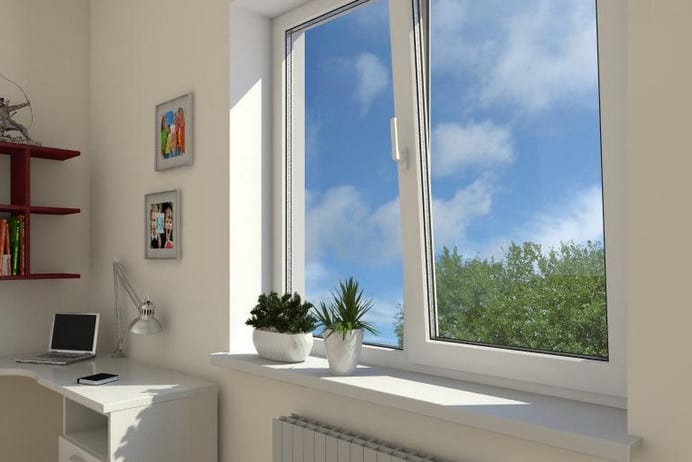Insulated Glass combines two or more glass panes that are spaced apart and sealed with a sealant to appear as a single unit. Also called double glazing, IGUs are designed to reduce heat loss and solar heat gain entering the building, while reducing visible light transmittance. Hence they improve the thermal performance, and reduce energy costs. They can be fabricated to meet sound control requirements, seismic requirements, bullet resistance, hurricane and blast resistance requirements, impact resistance and state energy codes. By combining laminated glass products, tinted glass, Low-E coatings, reflective coatings, silk-screened patterns, etc., a wide variety of insulating glass configurations can be made available to meet diverse aesthetic and performance needs.
IGU Surfaces :- The IGU comprises the following four surfaces:
Process The various machines used in the process of making insulated glass are washing unit, drying unit, spacer conveyor, butyl extruder, and pressing unit, which is vertical. The insulated glass is constructed in the following ways: A hollow aluminium spacer bar is bent into the desired shape. Holes are drilled in the spacer bar, which is filled with a desiccant such as silica gel or zeolite that helps in absorbing water vapour. The drilled holes are sealed with a primary sealant such as butyl. Primary sealant is also applied to the sides of the spacer bar. Two glass panes are placed along the side of the spacer bar and pressed with an automatic presser. A secondary sealant such as polysulphide or silicon is applied along the sides of the whole unit. The insulating glass unit is ready.


An IGU consists of at least two panes (or lites) of glass. Although IGUs generally use monolithic glass, other types of coated and laminated glasses may be used, depending on the application to enhance the performance of the unit
Frame is the spacer bar that is used to separate the two glass lites in an IGU. It is usually made of aluminium and filled with desiccant. It is responsible for holding the unit together, providing thickness and mechanical resistance, and ensuring optimum performance of the unit. There are two types of frames: those that are joined with corner keys and those by bent frames. - In the first type, the spacer material is cut to the specific size and desiccant is filled. The four sides are then assembled together using corner keys. In this process, the heat loss is more since the frame created has four joints. To resolve this, the frame is bent at 90 degree angle and assembled with only one joint, called a bent frame.
Frame is the spacer bar that is used to separate the two glass lites in an IGU. It is usually made of aluminium and filled with desiccant. It is responsible for holding the unit together, providing thickness and mechanical resistance, and ensuring optimum performance of the unit. There are two types of frames: those that are joined with corner keys and those by bent frames. - In the first type, the spacer material is cut to the specific size and desiccant is filled. The four sides are then assembled together using corner keys. In this process, the heat loss is more since the frame created has four joints. To resolve this, the frame is bent at 90 degree angle and assembled with only one joint, called a bent frame.
To remove the moisture within the IGU, Desiccants are used. The different types of desiccants are silica, molecular sieve and zeolites. The desiccants should be able to absorb water and hydrocarbons, not absorb krypton, argon or other thermal performance gases and should not contain pre-absorbed nitrogen.
Sealants are integral to manufacturing insulating glass because of their efficiency, ease of handling, eco-friendliness and safety. They are known for their adhesion, elasticity and durability. They also have a good cure profile, with low moisture vapour transmission rates. Sealants are of two types: primary and secondary. Poly Iso Butylene, or Butyl, is the most common primary sealant used. Silicone and Polysulfide are commonly used secondary sealants. The primary sealant helps in fixing the IGU at the time of assembly. Secondary sealant protects the gas filled spaces from moisture vapour penetration, chemical attack from cleaning fluids and glazing products, and liquid water penetration due to rain or condensation. Secondary sealants are structural adhesives, binding the glass panes in multi-pane IGUs (MIG) together. The sealant comprises two components which are mixed before application and applied either manually or mechanically.
The visible light transmittance of insulating glazing systems typically ranges between 7% and 80% while the visible light reflectance is in the range of 13-48%.
Insulating glazing can reduce noise by about 30dB and further reduction can be achieved by filling of inert gases and using laminated glazing.
Aluminum spacer frame is automatically curved and formed with only one joint and two seals are applied in insulating glass production. This ensures excellent sealing characteristics and long application life-time.
The U value is effectively lowered by insulating glazing; it can be further reduced by filling of inert gases.
The dew point of CSG insulating glazing systems is below-65C. It assures of no condensation formation under normal applications.
| Monolithic glass | Insulating glass |
|---|---|
| Monolithic glass is a single glass. Eg. annealed glass | Double glass contains hermetically sealed dry air space between the sheets of glass. Eg. IGU |
| Breakage Pattern | Does not break easily; In the rare event of breakage, shatters into small, pebble-like pieces |
| Gets heated directly by sunlight. | Double glazing prevents direct contact with sunlight. |
| Breakage Pattern | Does not break easily; In the rare event of breakage, shatters into small, pebble-like pieces |
| With the use of air-conditioner,the temperature difference between the inside and outside the building is very high. | With the use of air-conditioner, the temperature difference between the inside and outside of the building is very less. |
| There is only a thin glass barrier to prevent the outside heat from coming in. This results in in excessive loss of energy. | Due to convection, air circulates inside and acts as a barrier, preventing outside heat from coming inside and the cool air inside from escaping. This results in energy saving. |

